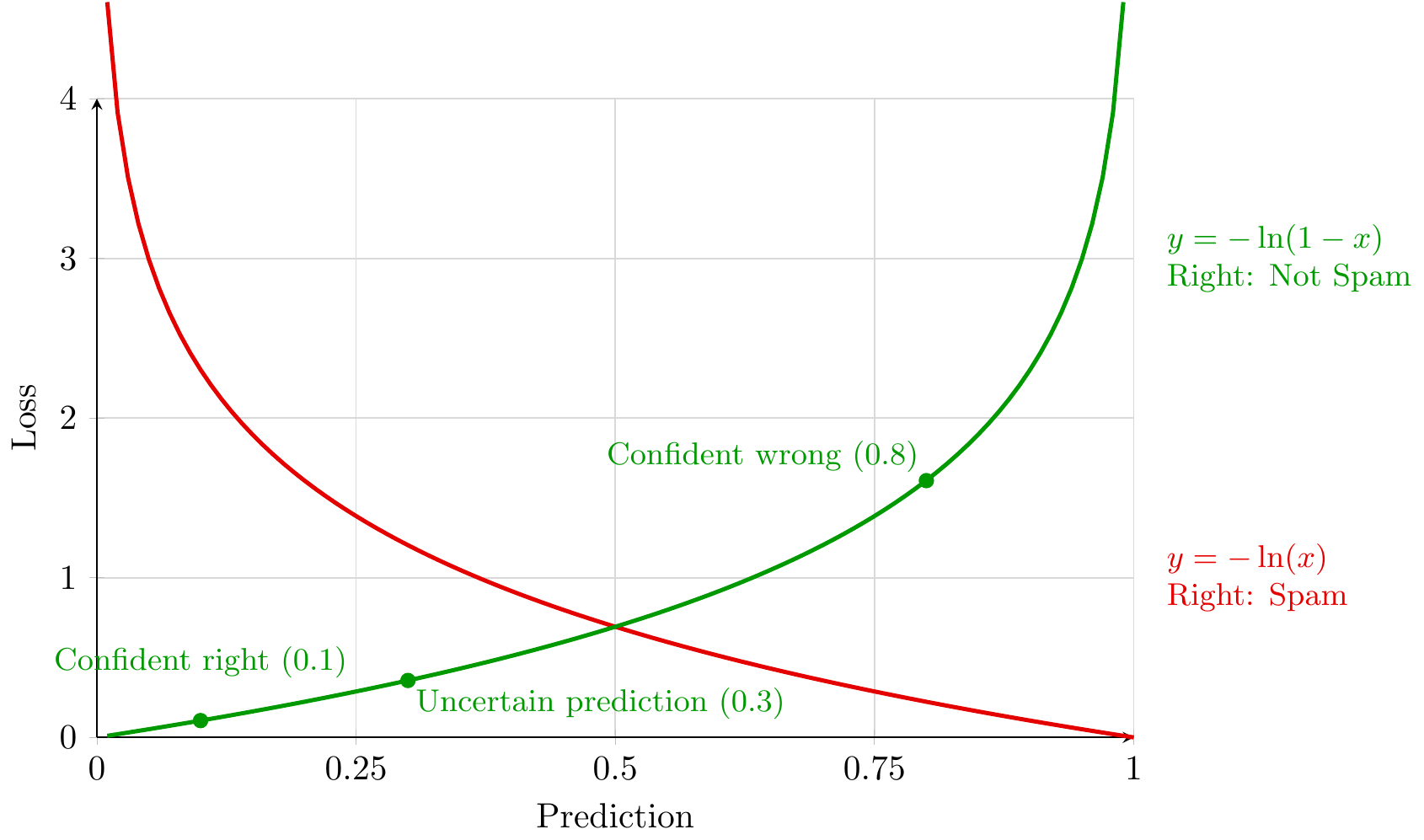STAT 4830: Numerical Optimization for Data Science and Machine Learning - Damek Davis
Stat 4830 Recap: Optimization in PyTorch - Cheat Sheet
Overall Goal: Consolidate understanding of numerical optimization for ML/Data Science using PyTorch, aiming to become an intelligent consumer of these methods.
1. Introduction
- Purpose: Final recap of Stat 4830. Consolidate concepts and skills.
- Course Theme: Formulating & solving numerical optimization problems for ML/Data Science. Emphasis on practical PyTorch implementation.
- Project Role: Provided hands-on application experience.
- Syllabus Goal: “Become an intelligent consumer of numerical methods and software for solving modern optimization problems.” This recap reinforces that goal.
2. Key Concepts & Skills
PyTorch Fundamentals
- Started with basics: Tensors, Linear Algebra (Lecture 1).
- Core Concept: Automatic Differentiation (
autograd) (Lecture 4). - Calculus View: Derivative/Jacobian = Best Linear Approximation;
autogradimplements chain rule (Lecture 5).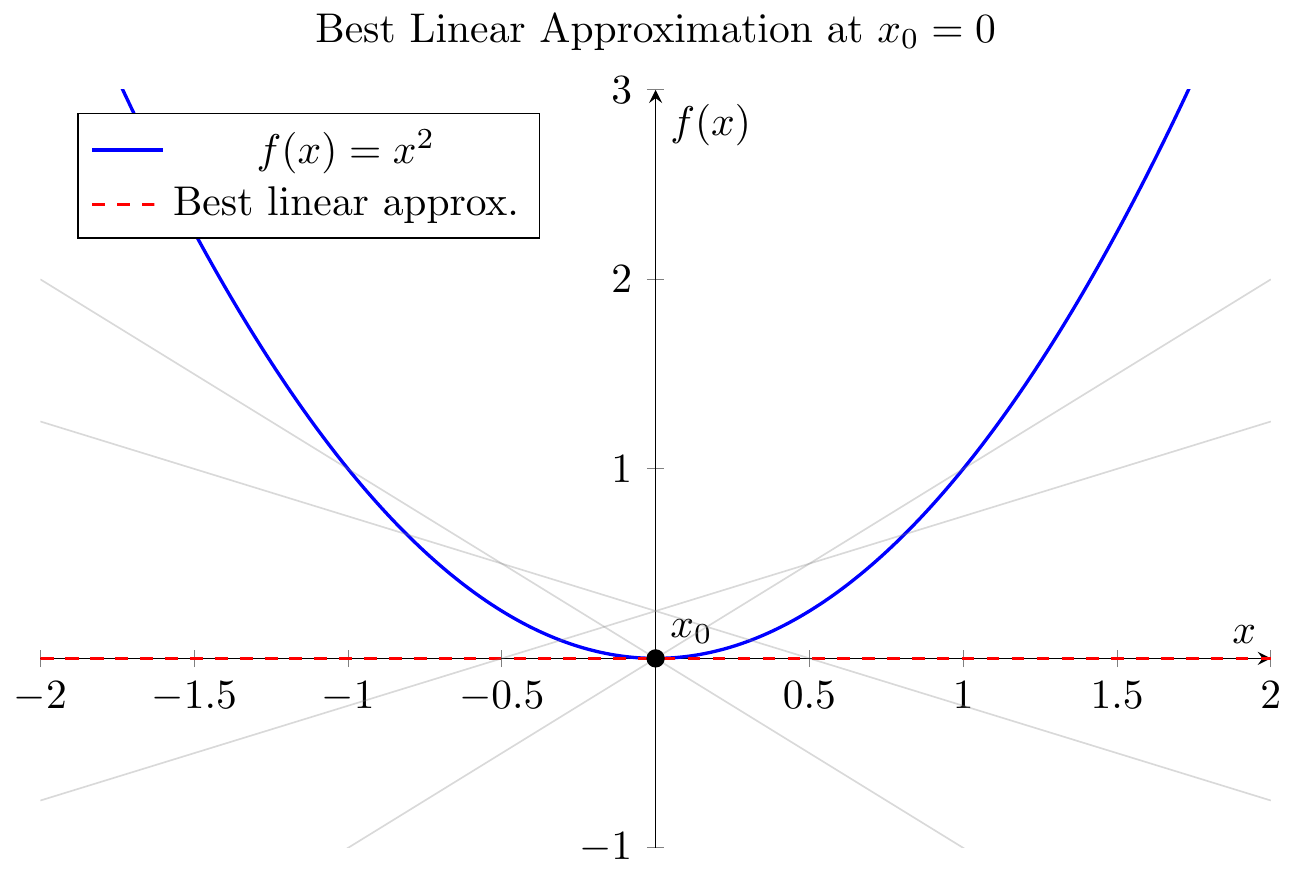
- Figure 2.1: Derivative as best linear approx. Tangent line gives closest linear fit near a point. (Lecture 5)
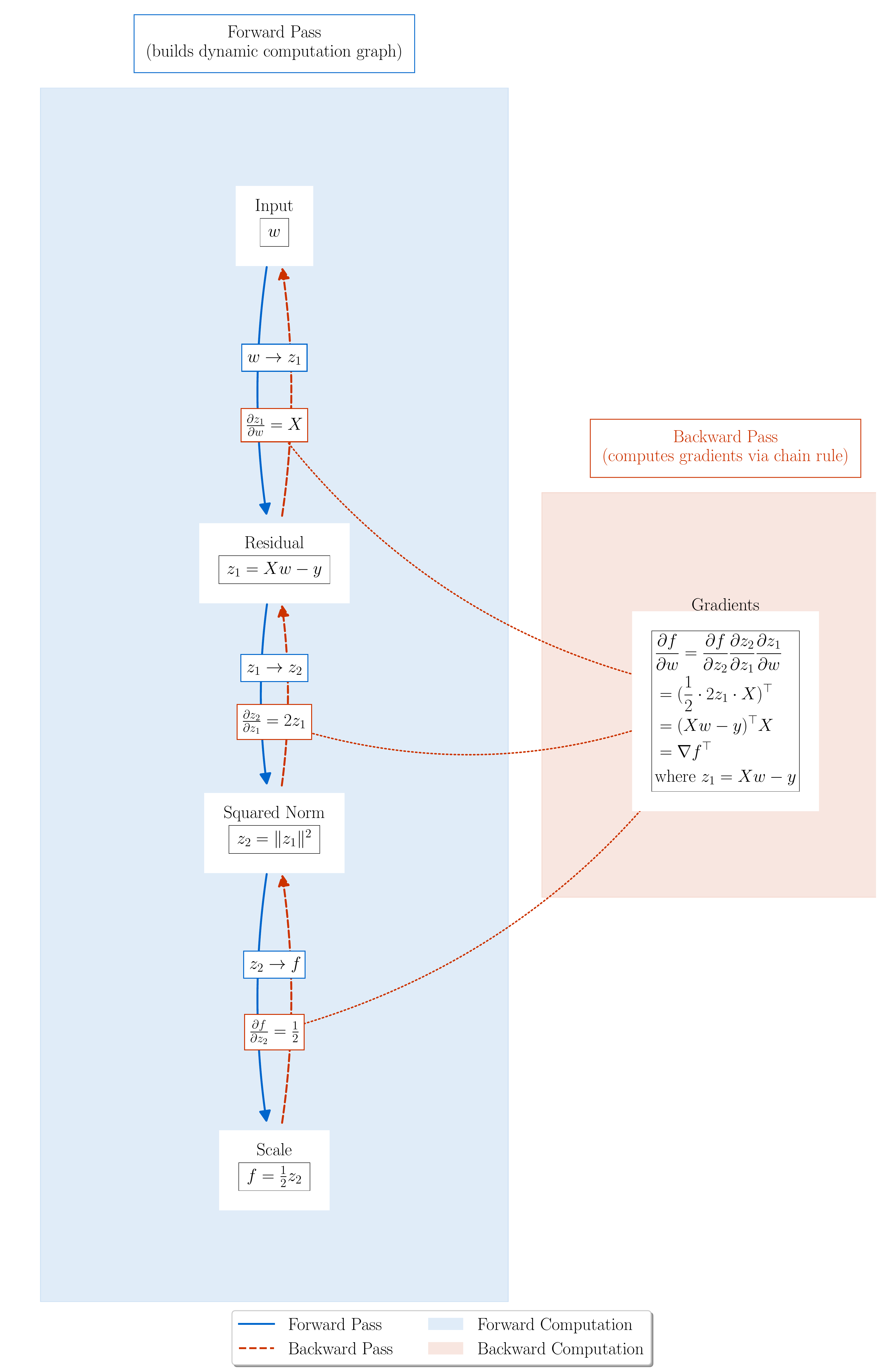
- Figure 2.2: Computational graph for Least Squares loss $L(w) = \frac{1}{2}|Xw - y|^2$.
autogradbuilds this graph during the forward pass and uses it to compute gradients via the chain rule duringbackward(). (Lecture 4)
- Figure 2.1: Derivative as best linear approx. Tangent line gives closest linear fit near a point. (Lecture 5)
- Key Tools:
nn.Module(models),DataLoader(data),torch.optim(optimizers),torch.optim.lr_scheduler(schedules) (Lecture 8).
Problem Formulation
- Goal: Minimize objective $L(w)$, typically average loss $L(w) = \frac{1}{n}\sum_{i=1}^n \ell(w, z_i)$.
- Examples:
Gradient Descent (GD) vs. Stochastic GD (SGD)
- GD Update: $w_{k+1} = w_k - \alpha \nabla L(w_k)$ (L3).
- Problem: Computing full $\nabla L(w)$ is $O(n)$ cost - infeasible for large $n$.
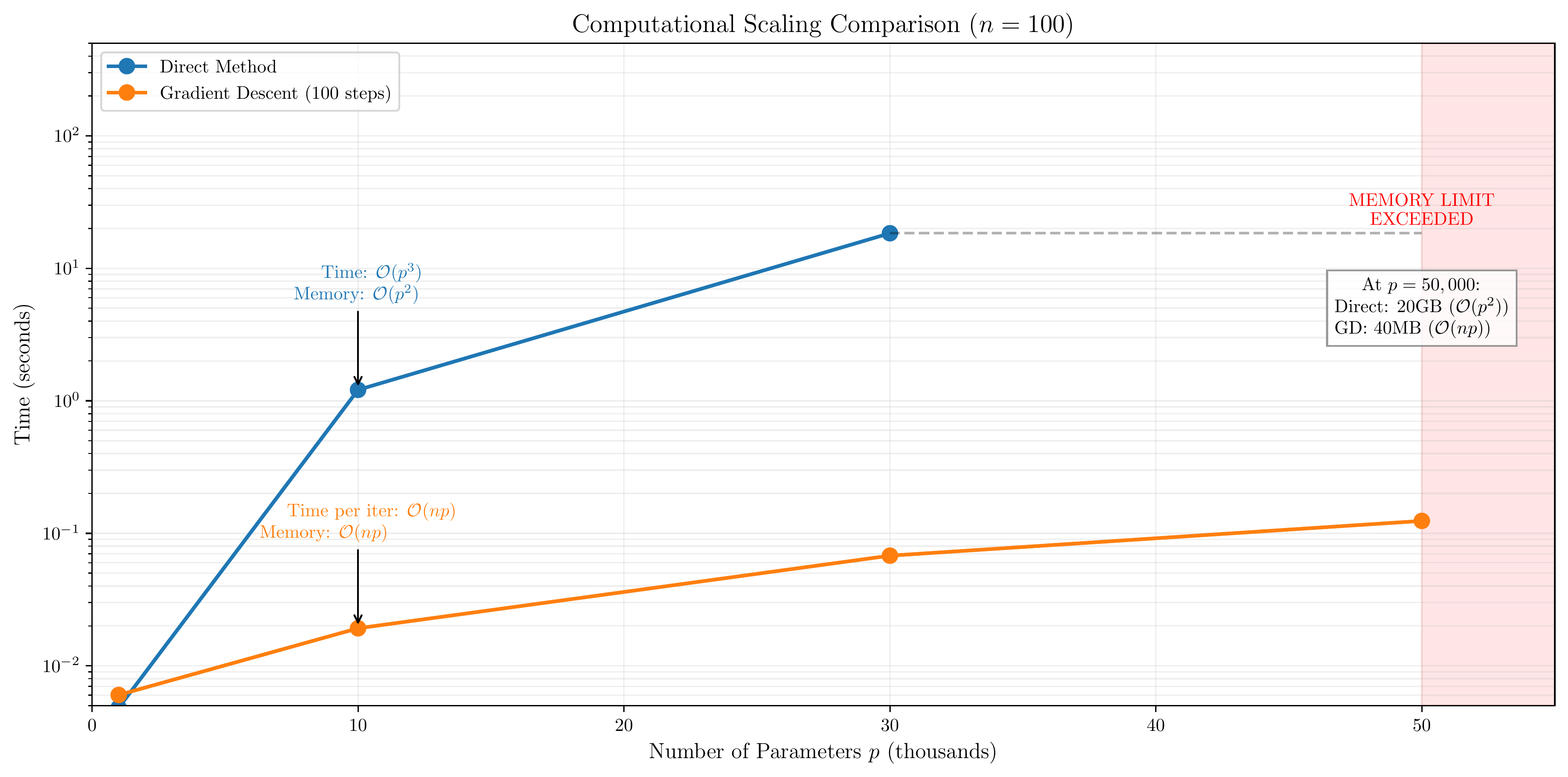
- Figure 2.4: Memory/Compute scaling. Direct methods need $O(p^2)$ memory, GD needs $O(n)$ compute/step. SGD avoids these. (Lecture 3)
- SGD Solution: Use estimate $g(w_k)$ from mini-batch/sample: $w_{k+1} = w_k - \alpha g(w_k)$ (L6, L8).
Understanding SGD Behavior (via NQM etc.)
- Converges in expectation.
- Constant $\alpha \implies$ convergence to noise floor (steady-state error), size $\propto \alpha/B$ (L6, L7). Need decreasing $\alpha$ for exact convergence.
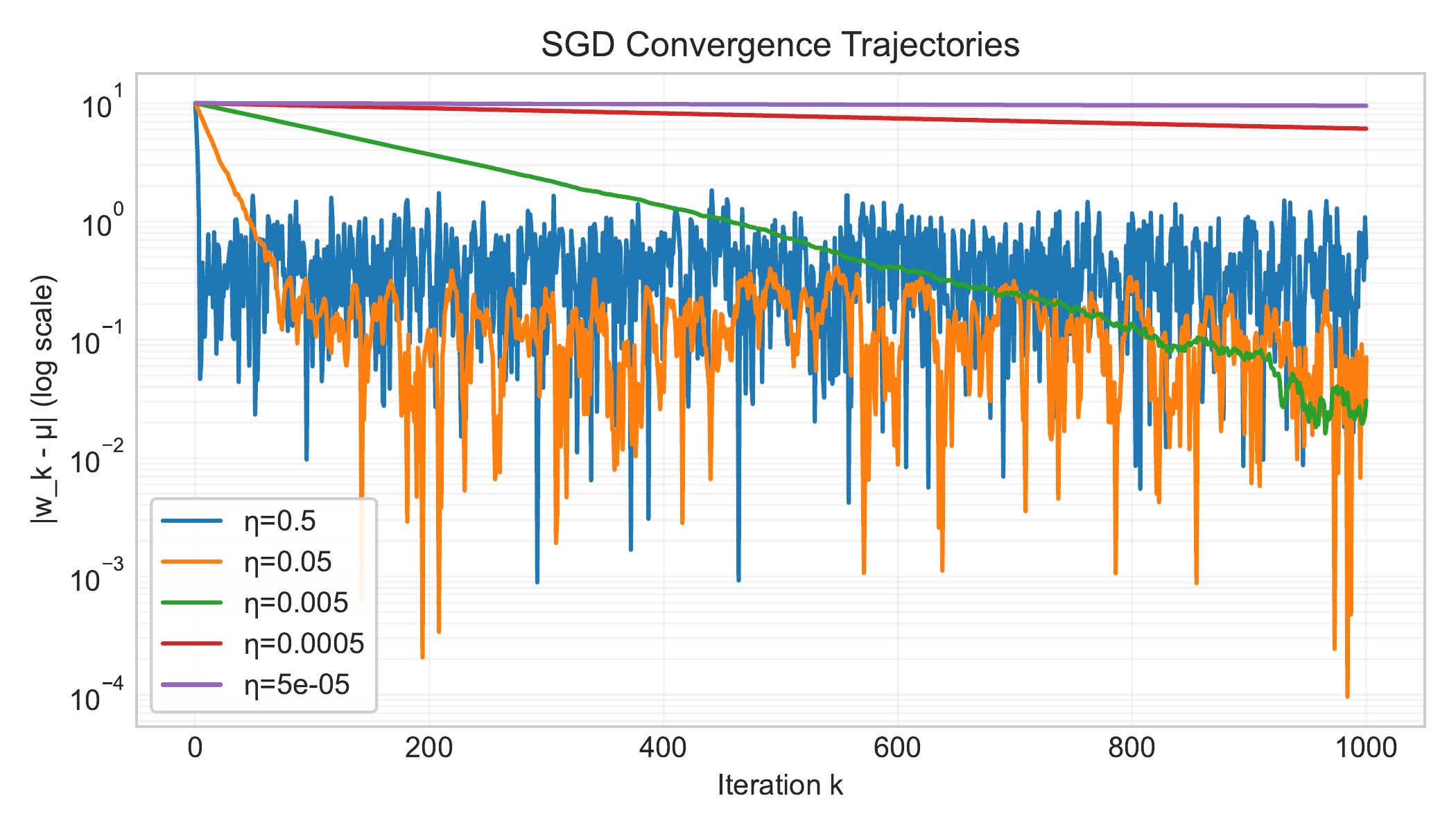
- Figure 2.5: SGD noise floor with constant $\eta$. Error decreases then plateaus. (Lecture 6)
- Conditioning number $\kappa$ affects speed (L2, L3, L7). Poor conditioning $\implies$ slow convergence / oscillations.
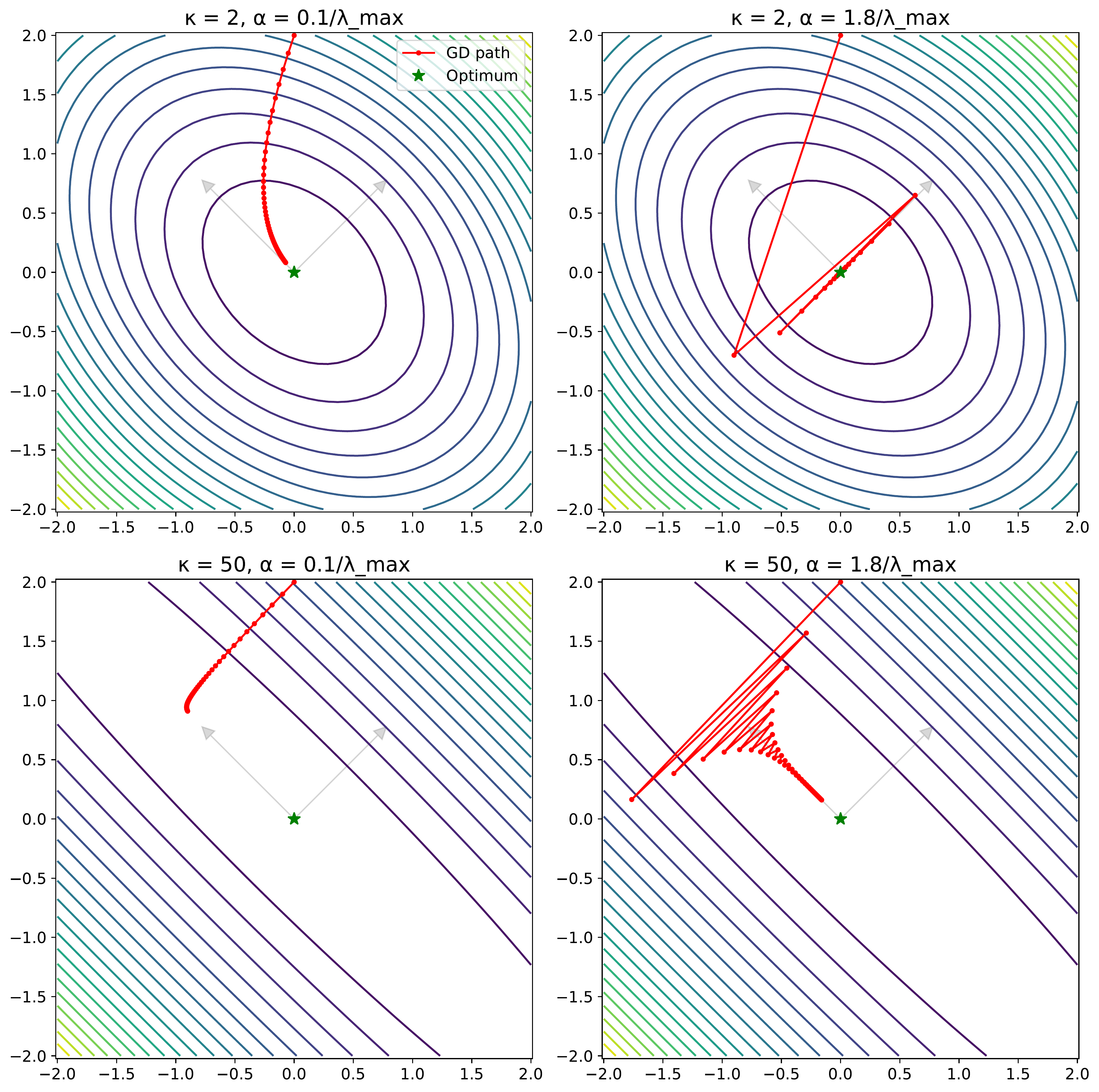
- Figure 2.6: High conditioning ($\kappa=50$) causes GD to zigzag, especially with larger steps. (Lecture 3)
SGD Variants (Insights from NQM L7)
- Momentum: Reduces initial error (good for large B / low noise). Can increase noise floor.
- EMA: Reduces steady-state risk (good for small B / high noise). Minimal effect on initial rate.
- Preconditioning: Addresses poor conditioning $\kappa$ (good for large B). Can amplify noise.
Adaptive Methods & Practical Tools
- Adaptive Opt: Adagrad, Adam, AdamW adjust LR per parameter (L9). Useful for varied scales/complex landscapes.
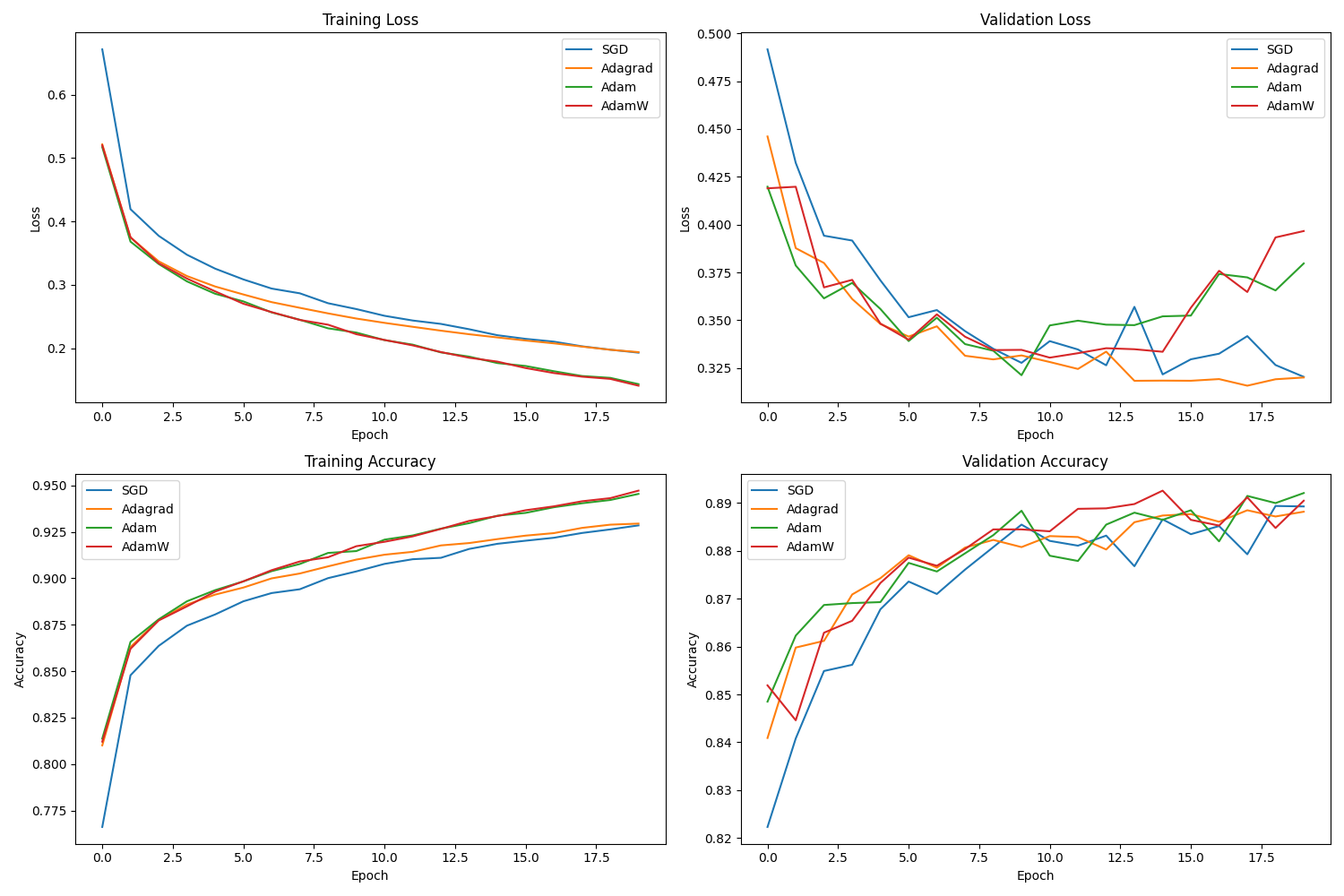
- Figure 2.7: Adaptive methods (Adam/AdamW) often converge faster initially on tasks like Fashion MNIST. (Lecture 9)
- Standard Practice: Weight Decay (regularization) & Learning Rate Schedules are essential (L8).
Practical Tuning & Evaluation
- Process Matters: Systematic tuning (Deep Learning Tuning Playbook, L11). Incremental changes, Exploration > Exploitation, Scientific/Nuisance/Fixed parameters.
- Figure 2.8: Iterative tuning workflow: structure exploration before exploitation. (Lecture 11)
- Fair Comparison: Optimizer comparisons depend heavily on the tuning protocol (space, budget) (L10). Use benchmarks, Time-to-Result metric. Key to being an intelligent consumer.
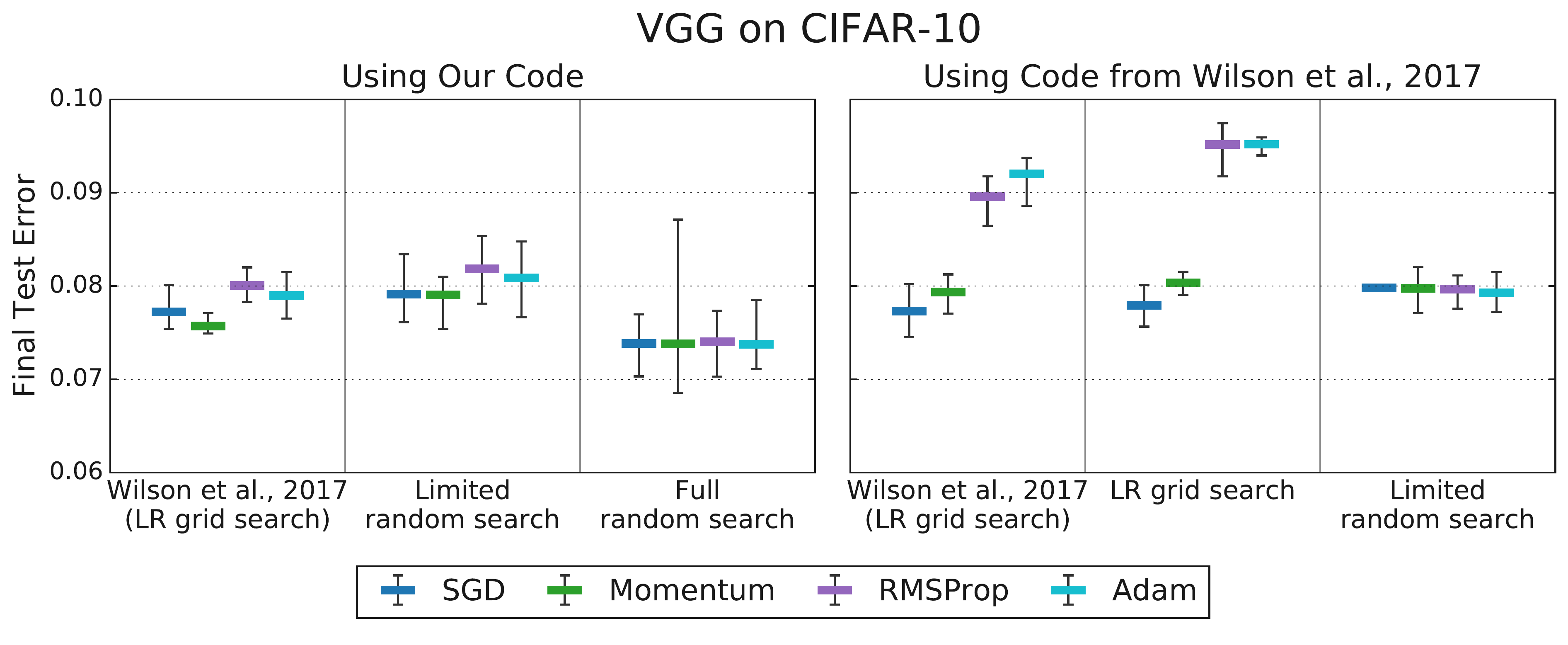
- Figure 2.9: Tuning protocol matters! Differences seen with limited tuning vanish with fair, comprehensive tuning. (Choi et al. 2019b, L10)
Scaling Large Models (L12)
- Bottleneck: Activation Memory. Grows with batch size
b, sequence lengths. - Solution 1: Activation Recomputation (Gradient Checkpointing) - trade compute for memory.
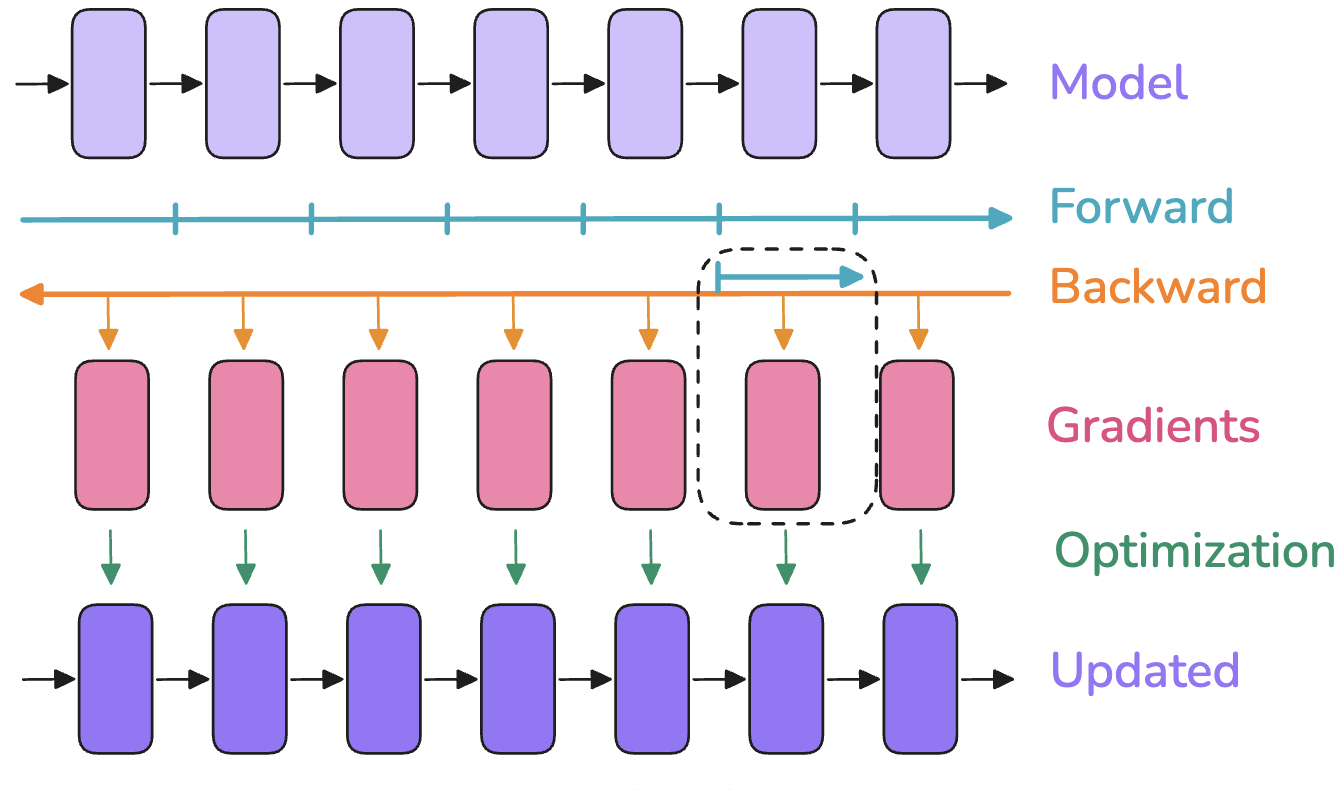
- Figure 2.10: Recompute activations during backward pass instead of storing all. Saves memory. (Lecture 12)
- Solution 2: Parallelism Strategies. Combine:
- Data Parallelism (DP / ZeRO / FSDP) - Replicate model, shard data/state.
- Pipeline Parallelism (PP) - Shard layers across devices.
- Tensor Parallelism (TP / SP) - Shard ops/tensors within layers.
- Figure 2.11: Combining parallelism (DP, PP, TP etc.) is needed for state-of-the-art scale. (Lecture 12)
3. How Did We Measure Up? (Learning Outcomes from L0)
- Goal: Foster ability as an intelligent consumer of optimization methods.
- 1. Modeling & Formulation: Practiced framing ML problems as $L(w) = \frac{1}{n}\sum \ell(w, z_i)$. Project required this. Less focus on RL formulations in lectures. (Achieved, with caveats)
- 2. Algorithm Selection & Analysis: Covered SGD variants, Adam/W. Analyzed tradeoffs (NQM, conditioning). Discussed benchmarking. Quasi-Newton less covered. (Largely Achieved)
- 3. Software Proficiency: Heavy PyTorch focus (
autograd,nn,optim). Project demanded implementation. (Core Achievement) - 4. Optimization in Practice: Emphasized tuning playbook, practical hyperparameters (LR schedules, WD), evaluation. Less formal theory. (Core Achievement)
- 5. Research Methods: Discussed benchmarking. Project simulated research workflow. Scaling addressed constraints. Privacy/specific constraints not covered. (Partially Achieved)
4. What We Didn’t Cover
- Convex Optimization Theory: Formal properties, duality, detailed convergence rates, specialized solvers (CVXPY).
- Other Formulations: Compressive Sensing, Diffusion Models (in lectures).
- Reinforcement Learning (RL): Briefly introduced (L13 draft), but requires dedicated study.
- Advanced Opt Topics: Higher-order methods (Newton), Constrained Opt (Projections, Proximal), Privacy-Preserving Opt, Scaling Laws (MuP).
5. Where to Go From Here
- Coursework: Advanced Optimization (Convex), Reinforcement Learning, Domain-specific ML (NLP, Vision).
- Project: Refine course project $\rightarrow$ paper, portfolio, open-source.
- Theory: Textbooks (Boyd & Vandenberghe, Nocedal & Wright), research papers.
- Systems: Distributed computing, GPU programming (CUDA), large-scale training engineering.
- Contribute: Open-source libraries (PyTorch, Jax, Hugging Face).
6. Conclusion
- Core Message: Numerical optimization + PyTorch = powerful, practical framework for ML/Data Science. Aim: Become an intelligent consumer.
- Personal Note 1: Enjoyed high interaction via project meetings. Impressed by project ambition & diligence. Fun seeing concepts applied creatively.
- Personal Note 2: Enjoyed discussing practical optimization relevance (esp. for AI). Appreciated insightful questions. Potential for Part 2 course (Adv. Methods, RL).
- Personal Note 3: Course was experimental. Plan to refine/update for Spring 2026, streamlining content.
- Final Thanks: Thank you for your participation and effort.
